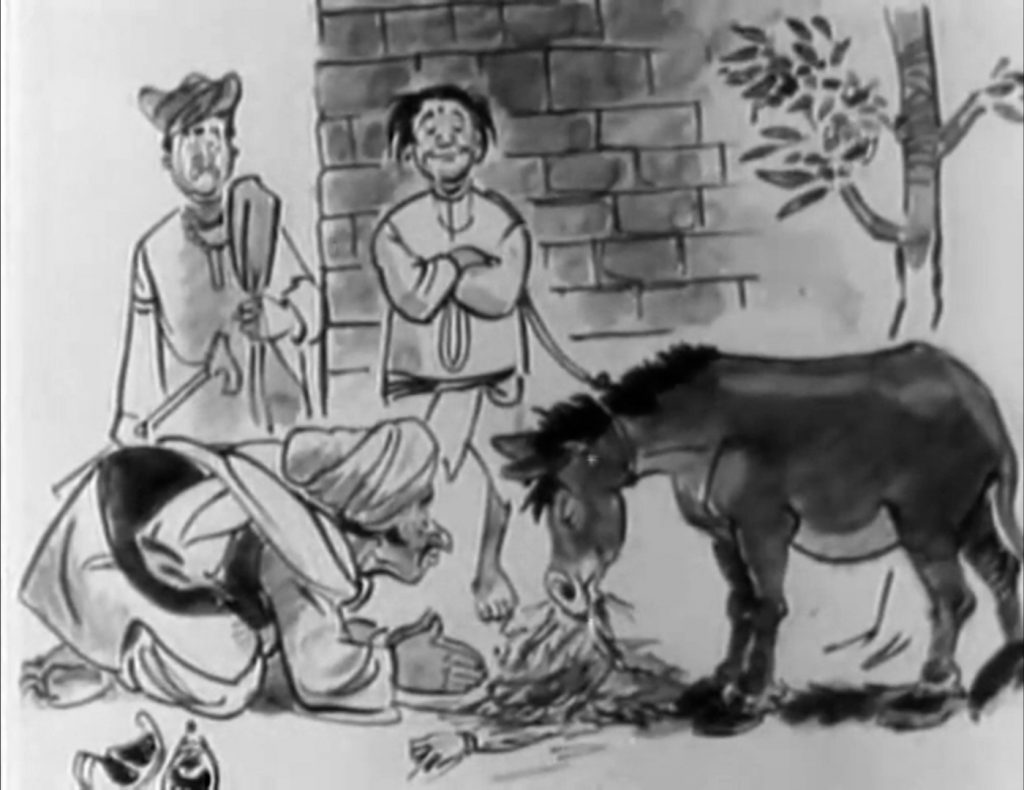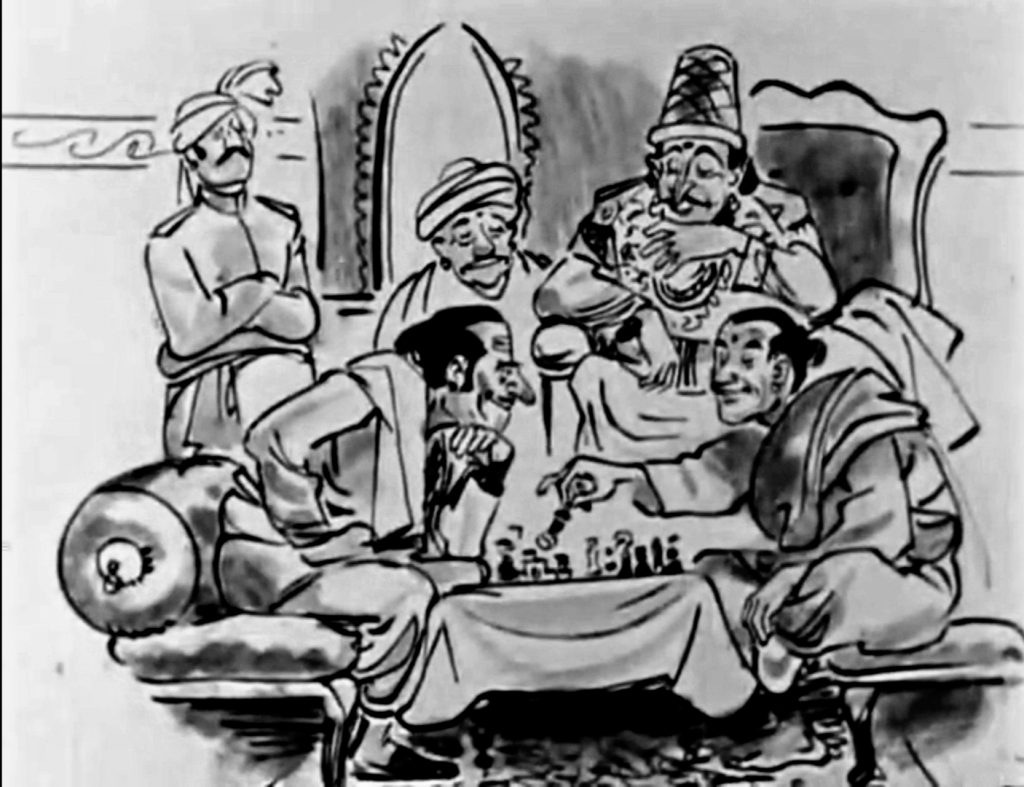
Today, let me tell you a story.
The great emperor Kṛṣṇadevarāya (Krishnadevaraya) had a lot of wise ministers in his court. The wisest of them was Tenali Ramakrishna.
One day, a merchant came to the king’s court from a foreign kingdom. He saluted the king and then said, “Your Majesty, I have heard from many people that you have very wise ministers in your court. But with your permission, I would like to test the wisdom of your ministers.” This aroused the king’s interest and he gave the merchant his permission.
The merchant gave the king three dolls that looked identical. He said, “Though these dolls look similar, they are different in some way. If your ministers can find out the difference, I will bow to their wisdom.
But if they can’t, I will assume that there are no wise ministers in your court. I will be back in thirty days for the answer.”

The king asked all of his ministers except Tenali Raman to assemble. He gave them the three dolls and told them to find the difference in them in three days’ time. But at the end of three days, none of the ministers could figure out the difference. The king got worried and called Tenali Raman.
He said to him, “Tenali, I did not summon you before because I thought that this problem will be simple. But since no one has been able to find the solution, it is up to you now. Find the difference between these dolls.” Tenali took the three dolls and went away.
The problem proved difficult for Tenali too, but at last, after a lot of effort, he figured out the difference. He went to the court with the three dolls on the day that the merchant had to return. Then, he announced in front of the whole court that he had found the difference between the dolls.
He said, “These three dolls are different because one of them is good, one average and one bad.”
When everyone asked Tenali that which doll was which, he showed them a tiny hole that was present in the ears of each of the dolls. Then, he took a very thin wire and put it in the hole of the first doll’s ear. The wire came out from the doll’s mouth. He did the same with the second doll and the wire came out from the doll’s other ear. In the third doll, the wire went to the heart and did not come out.
Tenali Rama explained, “In the first doll, the wire went in through the ear and came out through the mouth. So, this doll is bad as it represents people who cannot keep a secret. In the second doll, the wire came out of the other ear. So, it is average and represents harmless people who do not understand what is said to them. The third doll, in which the wire went to the heart and did not come out, represents good people who will keep the secrets that you tell them.”
The king, the merchant and all the courtiers were very impressed with Tenali’s wise answer. Then Tenali said, “But there can be another explanation too!
The first doll represents people who gain knowledge and spread it among others, so it is good. The second doll represents people who do not understand what they are taught, so it is average. The third doll represents people who have knowledge but keep it all to themselves. They do not teach anyone anything and so they are bad people.

Tenali Ramakrishna was an Indian poet, scholar, thinker and a special advisor in the court of Sri Krishnadevaraya. He was a Telugu poet who hailed from what is now the Andhra Pradesh region, generally known for the folk tales which focus on his wit. Tenali was one of the Ashtadiggajas (ashta – eight, dik – directions and gaja – elephants), or the eight poets at the court of Krishnadevaraya. Tenali Raman was noted for his brilliance and wit. His great work – Panduranga Mahatmyam is a Kāvya of high merit, remarkable for its sonorous dignity of phrasing, and is counted as one of the Pañcha Mahā Kāvyas (the Five Great Kavyas) of Telugu literature.
Yoga is having an insight into the way you think, for the way you think is the way you act, and the way you act is the way you become. Every situation has two sides, two perspectives – what you infer depends on your mode of thinking.
Katha Parampara – the ancient Indian art of storytelling – dates back to the Vedic age.

All our scriptures, including the great epics (Ramayana and Mahabharata) were carried forward in an oral tradition – with Sanskrit as the medium, and hence preserved for thousands of years. They were all the form of stories – for the need to narrate has been as old as civilisation itself. In later periods, kathakaars, or storytellers, wandered from village to village, carrying with them a bag of tales that entertained the young and old alike. The stories of the Pañcatantra and Hitopadeśa later went on to be translated into Persian, then Arabic, and then reached the Western world. Historians also attribute the source of Aesop’s Fables to the katha parampara of the East.
This oral tradition then continued into the evolution of dance, music, art and theatre – thus weaving together a rich legacy of the learning tradition.
Stories engage the listener, entertain them, and open the doors to vivid imagination. The best way to learn, is through a story. The kid in you will vouch for that, but the adult inside you looks for a certificate:)

So what’s a katha doing in the middle of a sādhanā? Well, we are all here to learn and discover, aren’t we?
Yog for Daily Living is not only about serious talk – I will interject our conversations with stories from our katha parampara. You may have heard some, and some others may be new, let’s try to approach each katha with the wide-eyed innocence of a child – one who has been promised an engaging story, and is now looking forward to hearing it. The accompanying moral may be big, or small, but the journey is what matters…
तस्मात् यत् पुरुषः सनसाअभिगच्छति।
तत् वाचा वदति।
तत् कर्मणा करोति।
यत् मनसः रेतः प्रथमं आतीत्।
तद् कामः अग्रे समवर्तताधि।
तत् एषाअभि अनूक्ता ।
Taitreya Aranyaka of Krishna Yajur Veda, Chapter 1, Anuvaga 23, Verse 1.
Whatever one thinks from one’s mind, that one does, what is first in the mind as a seed, later becomes desire, and then becomes what we are.
So watch your thoughts, words and actions, because they become habits, and in turn, your destiny.
